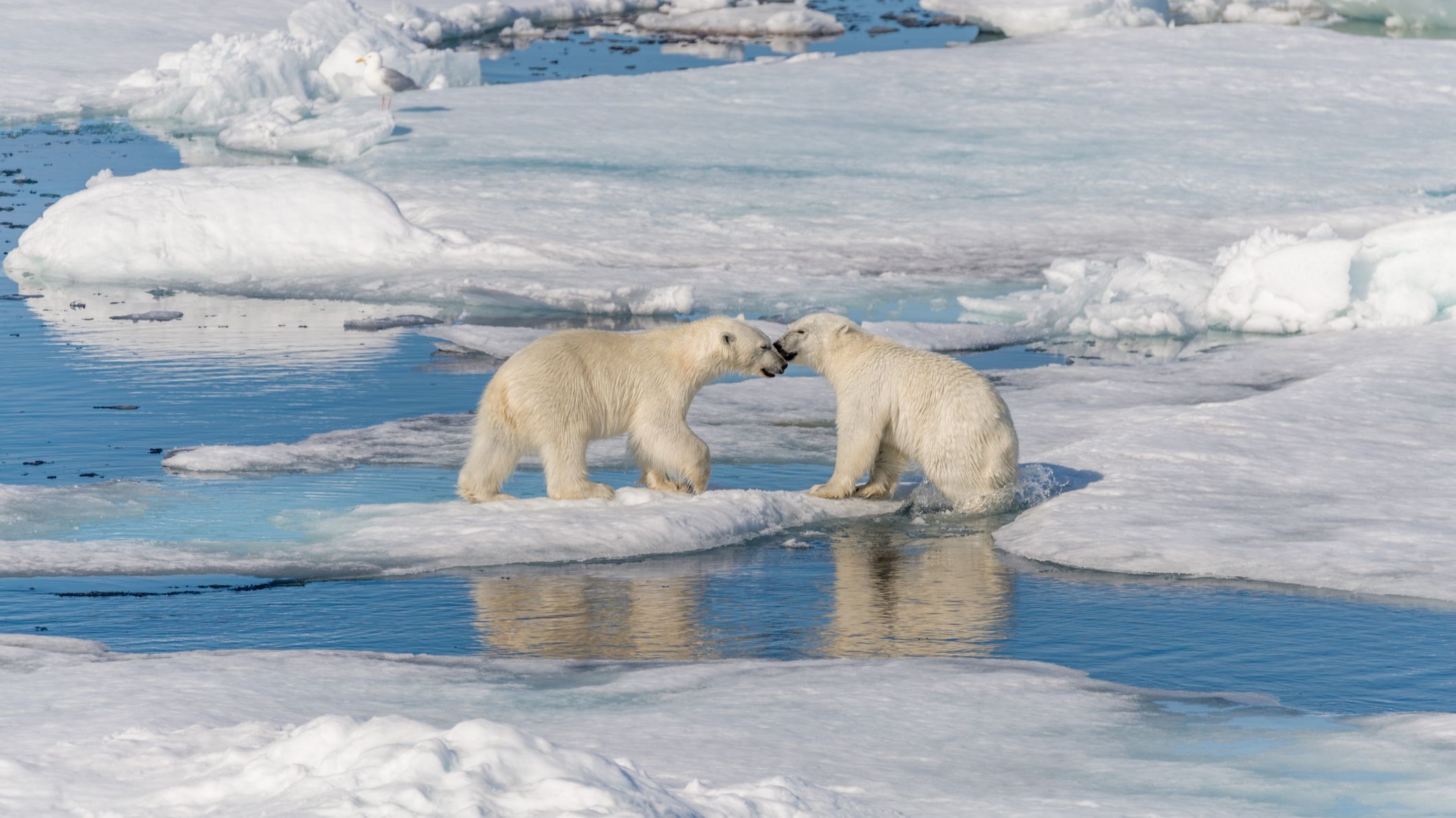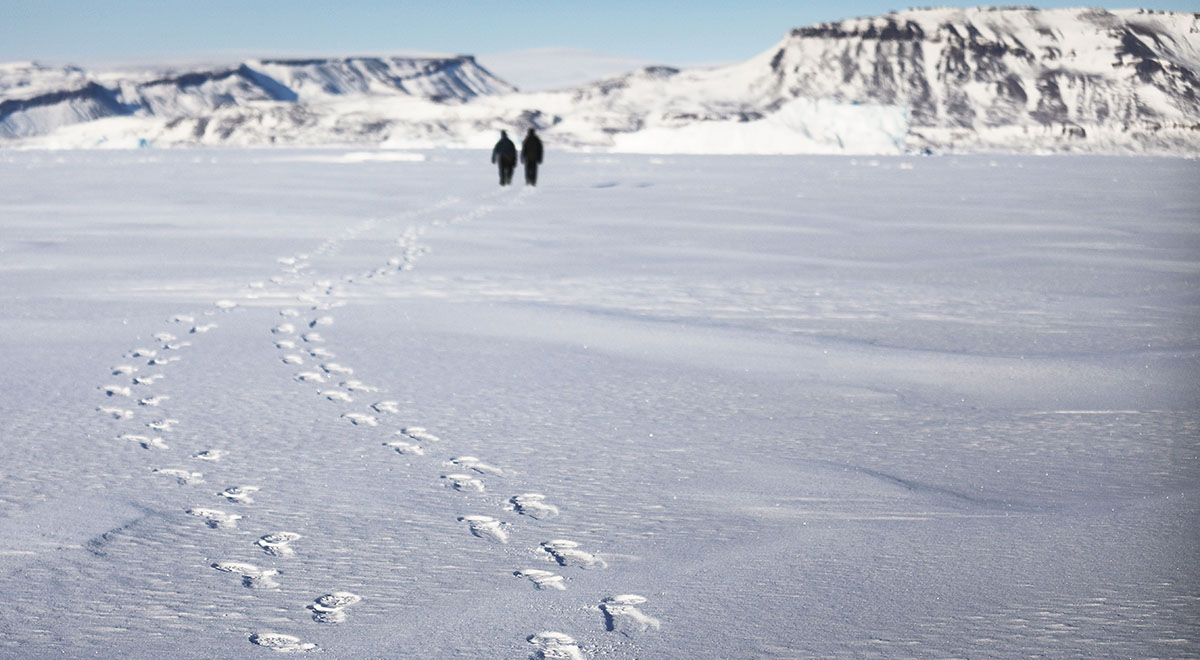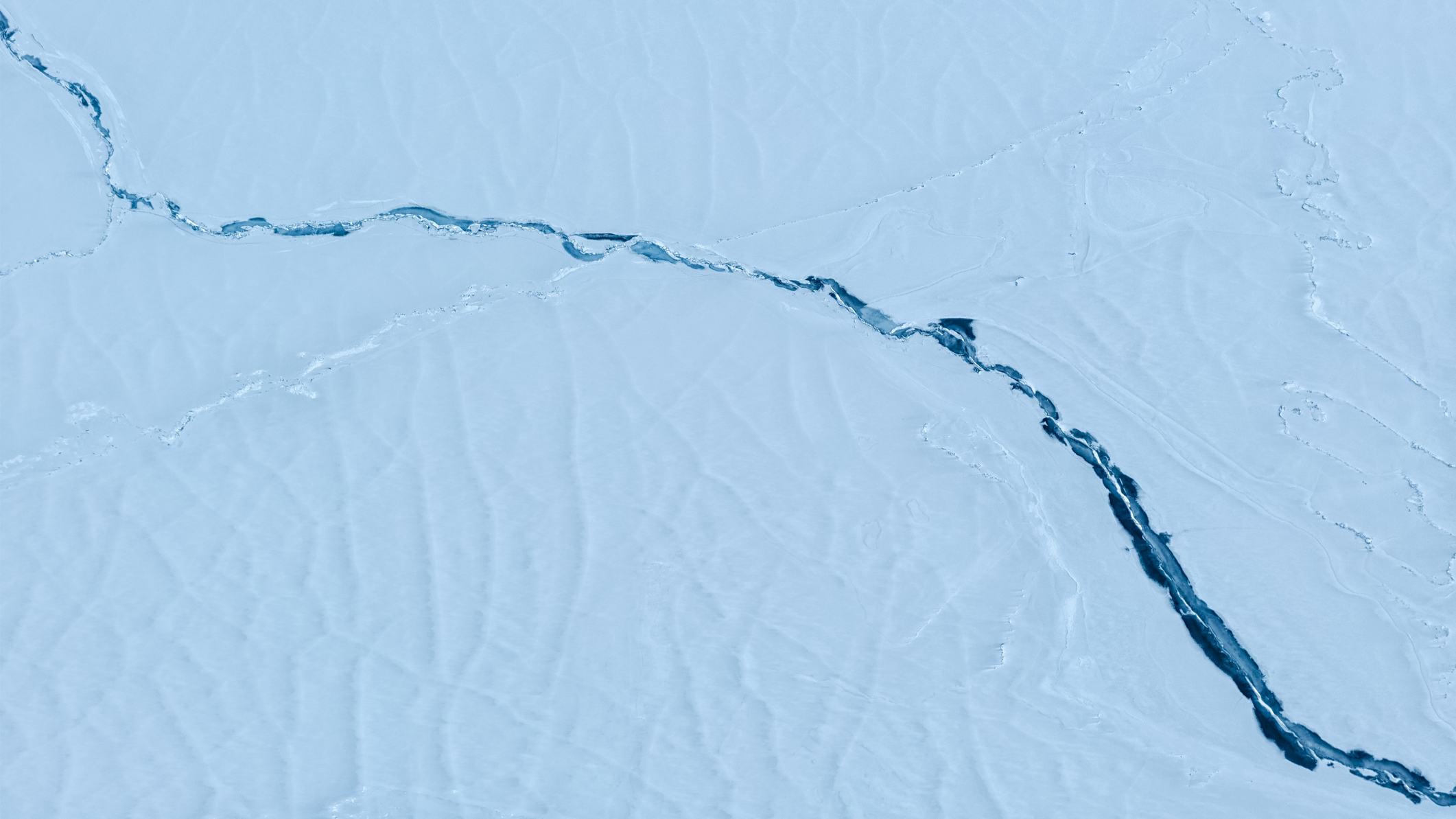Perspective
No, Polar Geoengineering Has Not Been Debunked
Dr Pete Irvine responds to a widely reported study that concluded polar geoengineering is a dangerous distraction. He explores six key claims, highlighting some that are misleading or incorrect.

Photo: Alexey_Seafarer
A group of 42 researchers recently published a study: “Safeguarding the polar regions from dangerous geoengineering”. It claims that none of the polar geoengineering technologies they assessed could help address polar climate change, and that they would all be environmentally dangerous. It also claims that “further research into these techniques would not be an effective use of limited time and resources”.
The study has been widely reported on in the media, featuring in over 100 news outlets, including the BBC, the Guardian, Le Monde, Der Spiegel, and CNN.
However, some of the core claims of the study are misleading or incorrect. Let’s review some of the key claims made about stratospheric aerosol injection (SAI) – one of the five polar geoengineering interventions they consider – a potential approach to cool the planet by creating a global layer of tiny reflective particles in the stratosphere, a high, stable layer of the atmosphere.
CLAIM: SAI would be ineffective in polar winter.
This is false. Studies find that SAI could cool the poles in winter despite the lack of sunshine.
The sun doesn’t shine at the poles in winter and so SAI would have no direct cooling effect on the poles in winter. Worse yet, the injected particles would still absorb heat and so would still warm the stratosphere with some impacts on the surface.
The study uses these facts to claim that SAI would be ineffective at cooling the poles and could in fact lead to warming. However, this is incorrect.
Climate model studies consistently show that SAI would cool the poles year-round, including in winter.1 In winter, the poles cool dramatically due to the lack of sunshine, but the heat they lose was built up in summer and transported to the poles from warmer, sunnier places by winds and ocean currents. By cooling the poles in summer and the rest of the world year-round, SAI would also indirectly cool the poles in winter.
Nevertheless, studies find that temperatures could still rise in winter at the poles if SAI halted global temperature rise, because SAI would not offset all the winter warming.2 However, it would be just as wrong to blame this “residual warming” on SAI as it would be to blame your (now weakened) headache on the painkillers you took.
CLAIM: SAI would exacerbate ocean acidification.
This is misleading. SAI could contribute only a tiny fraction to the ocean acidification problem. In fact, it might reduce it overall.
Offsetting 1°C of global warming, could be achieved by adding roughly 10 million tonnes of sulphur dioxide to the upper atmosphere each year.3 By doing this, SAI would add somewhat to the acid rain problem, which primarily affects lakes and soils on land, and which is caused by the tens of millions of tonnes of sulphur dioxide (and nitrogen oxides) emitted each year by burning fossil fuels.
However, acid rain has only contributed a few percent to the problem of ocean acidification.4 The oceans are acidifying because we are emitting tens of billions of tonnes of carbon dioxide each year. This CO2 reacts to form carbonic acid in water, making the oceans more acidic.
While the sulphur dioxide emitted by SAI would add to ocean acidification, it would contribute only a fraction of 1% to the problem. In fact, by reducing temperatures, SAI could reduce carbon cycle feedbacks, like the greenhouse gas emissions from melting permafrost,5 and so may actually reduce ocean acidification a little.
CLAIM: SAI would cause severe environmental damage at the poles.
This is incomplete and misleading. SAI would have environmental impacts on the poles, but, by cooling, it might lead to much less environmental damage overall.
The study highlights several of the side effects of SAI – on acid rain, air pollution, stratospheric ozone, and rainfall patterns – but it fails to provide any sense of scale or to compare those risks against climate change.
For example, one recent study found that if SAI were deployed to offset the next 1°C of global warming, tens of thousands of lives could be lost due to SAI’s impacts on ozone and air pollution. However, they found that this could be outweighed 13 to 1 by the lives saved due to reduced extreme heat (partly offset by increased extreme cold).6
In the same kind of scenario, studies suggest SAI could result in a minority of regions seeing greater changes in rainfall and water availability than they would have seen under climate change. However, the same studies show that the overall changes would be reduced.7
While SAI would cause some environmental damage at the poles, climate change is causing severe environmental damage. SAI would be highly effective at cooling the poles, reducing the melting of ice that drives many polar impacts.1 Studies consistently suggest that SAI would reduce sea ice loss, slow glacier and ice-sheet loss, and reduce permafrost melt.1,8
CLAIM: SAI would not be ready in time to make a difference.
This is misleading. In fact, after a decision to deploy, SAI could be ready in a decade.
SAI would be feasible using proposed high-flying jets to lift a few millions of tonnes of material (sulphur dioxide is the leading candidate) up to about 65,000 ft or 20 km.
Studies suggest this would cost around $18 billion per year to offset 1°C of global warming, and that the aircraft needed might take around a decade to build once a decision to deploy is made.9
This cost is relatively low compared to the costs of the energy transition – the world spent around $2 trillion on clean energy investments in 2024 – and in comparison to the economic impacts of climate change.10
The study argues that, while SAI could be deployed in a decade, the governance challenges it faces mean that it would not be ready in time. This is possible (see governance section below), but if countries wanted to deploy, they could do so in time to make a difference.11
CLAIM: Polar SAI faces serious governance challenges.
This is true. SAI faces serious governance challenges, but it would be premature to presume these are insurmountable.
It is not possible to isolate the effects of SAI to one country or even to just the poles – SAI would be a global intervention.8 Currently there is no clear mechanism or obvious international venue for deciding on whether and how to deploy SAI. Also, SAI could be pursued by one country or by a small coalition, which could raise geopolitical tensions between countries.
For example, if SAI were deployed, there are bound to be claims (some valid, some not) that SAI is responsible for some observed environmental harm. There is no established mechanism for judging these claims or an insurance or liability scheme for resolving them. Without this, countries might look to other, less peaceful means to resolve their disputes.
Governance for SAI and other polar geoengineering interventions is a major challenge, but the broader effort to tackle climate change also faces very difficult governance challenges. It may be that these challenges prove insurmountable, but it would be premature to conclude that’s the case before a serious effort is made to overcome them.
CLAIM: Mitigation is happening fast enough.
This is contentious. Whether or not emissions cuts are happening fast enough is up for debate, but there are good reasons to be concerned.
One section of the study “debunks” several arguments in favour of SAI and other polar geoengineering interventions, including the argument that “mitigation is not happening fast enough”.
The study acknowledges the shortcomings in countries’ commitments for near-term emissions cuts (which will see emissions plateau over the next decade), but the authors trust that the longer-term promises countries have made will be fulfilled in full. The authors then point to work that suggests that if these promises are delivered in full, the world would be on track for around 2°C of warming.
Whether or not emissions are being cut fast enough is ultimately a matter of opinion, though there are reasons to be concerned:
- A world of 2°C of warming would face significantly greater climate impacts and a greater risk of crossing many “tipping points” compared to today.
- There is also a chance that the world warms considerably more than expected, which means that the same emissions trajectory could easily lead to 2.5°C rather than 2°C of warming.
- And there are good reasons to doubt that these long-term promises will be delivered given the recent backsliding on climate targets from many countries and corporations.
Does the shortfall in climate action justify geoengineering research?
After “debunking” the argument that mitigation is not happening fast enough to prevent temperatures reaching 2°C, the study argues that: “While this shortfall in climate action is concerning, it does not justify turning to geoengineering as a solution.”
The authors have reached what they feel is a definitive answer on SAI and other polar geoengineering interventions and recommend against further research. However, given the slow progress on emissions cuts and mounting climate risks, the question of whether SAI or other geoengineering interventions would be justified is bound to come up again and again.
Making an informed judgment on this question will require gathering robust, scientific evidence on feasibility, effectiveness, and risks. It will also require well-rounded assessments that weigh the risks of SAI against the risks of climate change without SAI.
The authors are right to note that SAI and other polar geoengineering interventions are not the answer to climate change but, given the growing impacts of climate change and the slow progress on emissions cuts, further research on these ideas should not be out of the question.
The views expressed by Perspective writers and News Reaction contributors are their own and are not necessarily endorsed by SRM360. We aim to present ideas from diverse viewpoints in these pieces to further support informed discussion of SRM (solar geoengineering).
Endnotes
- Duffey A, Irvine P, Tsamados M, et al. (2023). Solar geoengineering in the polar regions: A review. Earth’s Future. 11(6):e2023EF003679. https://doi.org/10.1029/2023EF003679
- Banerjee A, Butler AH, Polvani LM, et al. (2021). Robust winter warming over Eurasia under stratospheric sulfate geoengineering–the role of stratospheric dynamics. Atmospheric Chemistry and Physics. 21(9):6985-97. https://doi.org/10.5194/acp-21-6985-2021
- Haywood J, Tilmes S, Keutsch F, et al. (2022). Chapter 6: Stratospheric Aerosol injection and its Potential Effect on the Stratospheric Ozone Layer. In: Scientific Assessment of Ozone Depletion 2022. pp. 325–375. https://csl.noaa.gov/assessments/ozone/2022/downloads/Chapter6_2022OzoneAssessment.pdf
- Doney SC, Mahowald N, Lima I, et al. (2007). Impact of anthropogenic atmospheric nitrogen and sulfur deposition on ocean acidification and the inorganic carbon system. Proceedings of the National Academy of Sciences. 104(37):14580-5. https://doi.org/10.1073/pnas.0702218104
- Zhao M, Cao L, Visioni D, MacMartin DG. (2024). Carbon Cycle Response to Stratospheric Aerosol Injection With Multiple Temperature Stabilization Targets and Strategies. Earth’s Future, 12(6). https://doi.org/10.1029/2024EF004474
- Harding A, Vecchi GA, Yang W, Keith DW. (2024). Impact of solar geoengineering on temperature-attributable mortality. Proceedings of the National Academy of Sciences, 121(52). https://doi.org/10.1073/pnas.2401801121
- Irvine PJ, Keith DW. (2020). Halving warming with stratospheric aerosol geoengineering moderates policy-relevant climate hazards. Environmental Research Letters. 15(4):044011. https://doi.org/10.1088/1748-9326/ab76de
- Lee WR, MacMartin DG, Visioni D, et al. (2023). High‐latitude stratospheric aerosol injection to preserve the Arctic. Earth’s Future. 11(1):e2022EF003052. https://doi.org/10.1029/2022EF003052
- Smith W. (2020). The cost of stratospheric aerosol injection through 2100. Environmental Research Letters. 15(11):114004. https://doi.org/10.1088/1748-9326/aba7e7
- Waidelich P, Batibeniz F, Rising J, et al. (2024). Climate damage projections beyond annual temperature. Nature Climate Change. 14(6):592-9. https://doi.org/10.1038/s41558-024-01990-8
- Parson EA, Keith DW. (2024). Solar geoengineering: History, methods, governance, prospects. Annual Review of Environment and Resources https://doi.org/10.1146/annurev-environ-112321-081911



